Estimated reading time 12 minutes, 55 seconds.
As he settled under the camouflage netting next to the tactical operations centre, a brief reprieve from the hot sun of a late May afternoon in the ever-changing weather of the Garrison Wainwright training area, Colonel Carl Brassard was clearly relishing his job.
Over the past week, his aviation battalion of CH-146 Griffons and CH-147F Chinooks had been primarily supporting the red, or enemy, force in a flurry of dynamic attacks. It wasn’t the sort of flying his team had planned or trained for prior to Exercise Maple Resolve, but they were thoroughly enjoying the experience.

“We have brought back mission profiles we probably last did when we had the [CH-136] Kiowa,” said Brassard, the commanding officer of 430 Tactical Helicopter Squadron in Valcartier, Quebec, “nape of the earth flying, down close to the trees and into cutlines, at lower speeds to approach the enemy as close as possible, to define enemy positions and provide feedback to the opposition to then call in fire missions. The first two days we did 18 hours of just that.”
The aviation battalion was in a brief lull, preparing to switch sides later that afternoon to support the blue force, the primary training audience (PTA) of the 1st and 2nd battalions of 5 Canadian Mechanized Brigade Group (5 CBMG), as they went on the offensive after a week of defensively countering an aggressive enemy.
Exercise Maple Resolve is the Canadian Army’s largest live confirmation training event. Conducted by the Canadian Manoeuvre Training Centre across the vast rolling terrain of 3rd Canadian Division Support Base Detachment Wainwright, Alberta, the exercise validates units of the Army’s three mechanized brigades for global deployment. An aviation battalion of Griffons, Chinooks and other air assets — some live and some simulated — is usually incorporated into the training. But the helicopters are typically a blue force asset, providing air mobility and other effects for the PTA — not the enemy. And this time, the opposition force (OPFOR) was a formidable foe, led by the 12e Régiment blindé du Canada (12 RBC) and its armoured reconnaissance squadrons, with support from special operations forces.
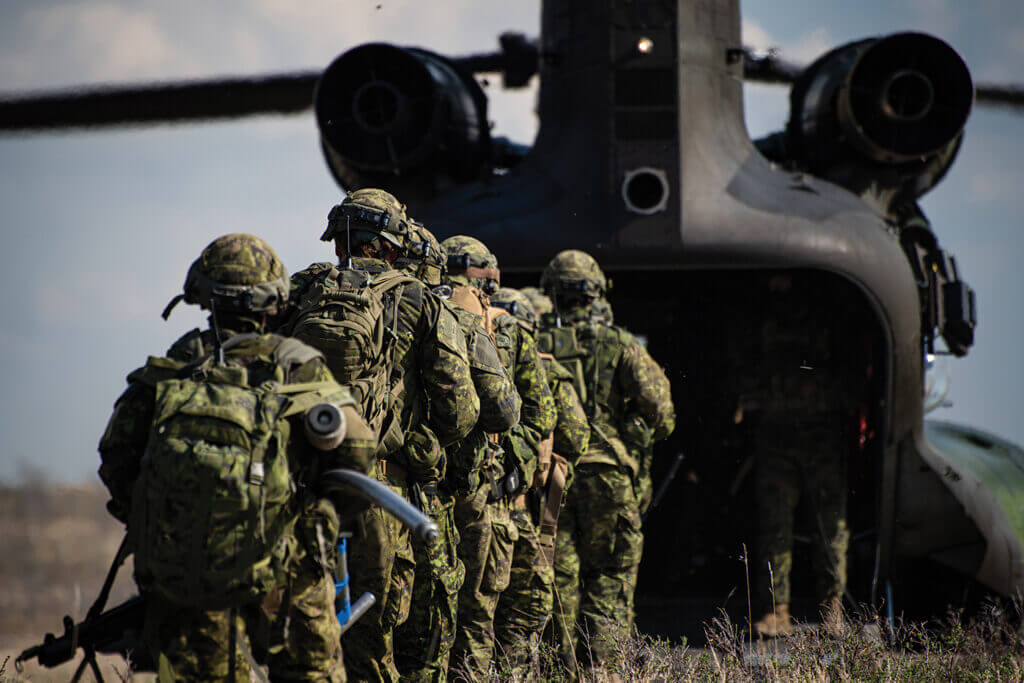
Brassard’s task was to support the PTA but also provide a realistic threat so “they can train with a solid enemy.” The scenario, set in Eastern Europe, involved a peer adversary known as Donovia with three armoured brigades and Russian-like capabilities.
Though there was a main events list for the overall exercise — much of it around the actions of the blue force — the aviation battalion soon found itself “supporting the red force much more than I was expecting,” said Brassard, “so we had to adjust to flying mission profiles that we had not done before.”
Russia’s invasion of Ukraine and the prolonged war has sparked “a paradigm shift in the way we do business” across the Canadian Armed Forces, Brassard noted. The counterinsurgency campaigns of a decade ago have given way to a peer-to-peer form of warfare that is both familiar and new. But taking on the role of opposing tactical aviation meant relearning flying techniques quite literally on the fly in Wainwright shortly before Maple Resolve kicked off.
“We have been able to recreate something that I believe is quite realistic,” Brassard explained. “Not just the effects, but also the attitude, such as doing an air mobile penetration of an enemy zone [almost] blind, with not much sighting on the landing zone. It’s not the North American approach but it is [a likely Russia practice]. They are more apt to accept risk. If we had deployed with the blue force, I don’t know that we would have done that. We went tactically risky because we were another nation that is more prone to take these types of risks.”
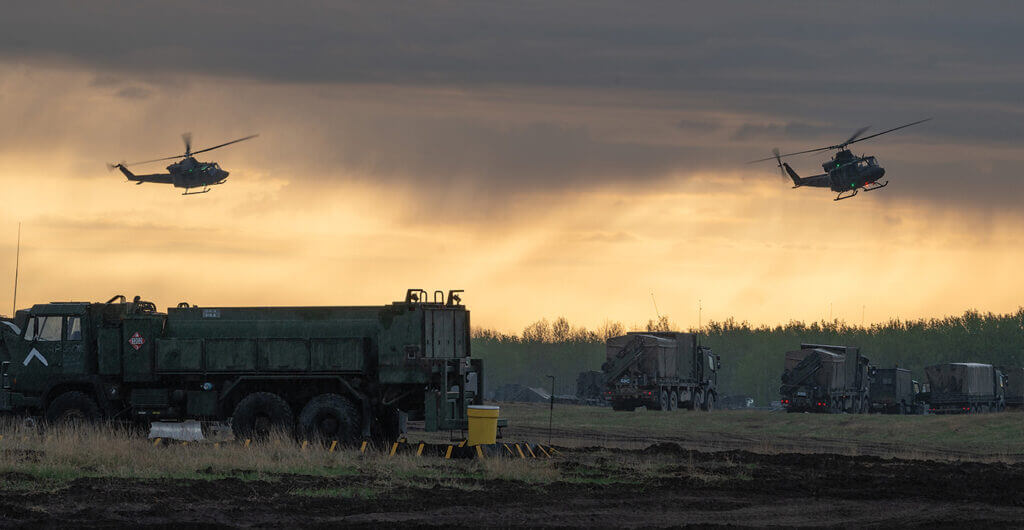
That did not mean “putting aside the operational risk management of conducting helicopter operations,” he stressed, but for the purposes of the exercise the aviation battalion adopted a willingness to accept helicopter losses to accomplish a mission.
“We stayed safe throughout with the actual flying,” he said. “But we were way more willing to accept the potential risk of the loss of helicopters within the game when playing the OPFOR than we were playing the blue force. The enemy forces were doing far more [penetrating attacks] than we would have done in reality.”
The previous night, shortly before midnight, his tactical operations centre received the alarming report of two Chinooks downed four minutes apart while attempting an aggressive insertion with little advanced reconnaissance.
“They landed in proximity of parked Leopard tanks. The tanks turned with their sensors and engaged. We lost both Chinooks. Though we were playing the OPFOR, I was pleased to see the blue force doing what they need to do when faced with such a threat.”
Throughout much of the exercise, Brassard and his battalion headquarters operated with almost split personalities, assuming the enemy role early on while still conducting some operations to support the blue force. “My battle captain is more focused on the red force, my operations officer with the blue force,” he said. “They talk to each other but they each plan [separately] with the [necessary] information.”
And if they had an inkling of what might be awaiting aircrews flying for either side, they kept that to themselves, Brassard especially.
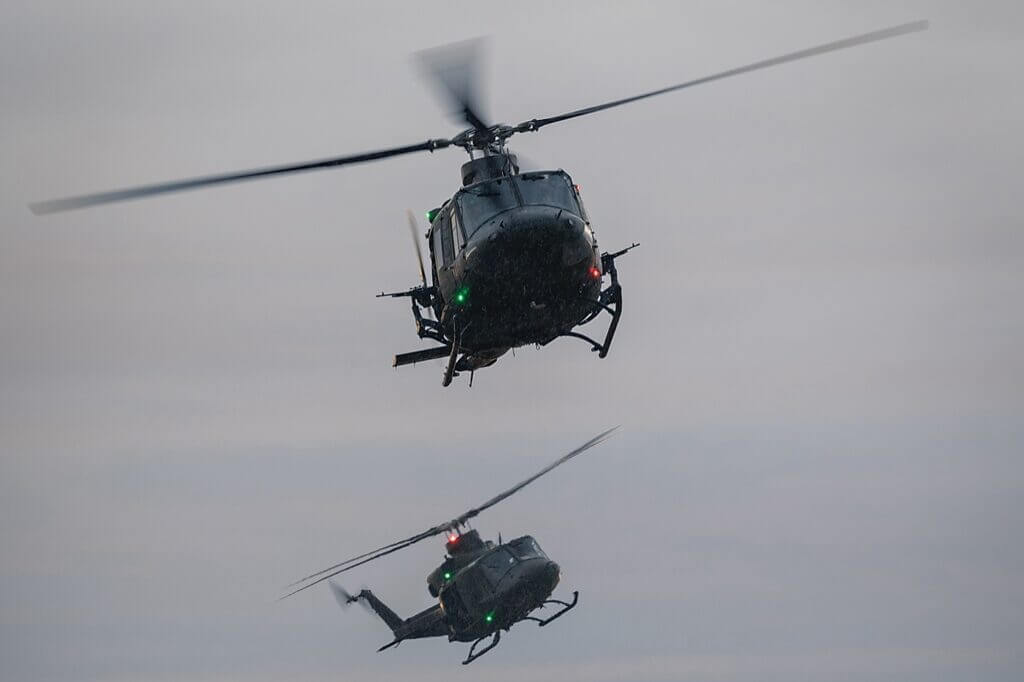
“Some of my team that were planning the missions, say an OPFOR mission, were not necessarily aware of the blue force scheme of manoeuvre … [If] there was a brigade stronghold position or armour vehicles in position, I was not changing their plan because I knew that. And some nights [the aircrews] were arriving and there were armoured vehicles in location, and they had to [adapt] quickly.”
On occasion, he acted as “an honest broker” to keep the threat realistic, such as when the OPFOR requested the aviation battalion emulate attack helicopters. “If we are not granting the blue force the luxury of having Apache [helicopters], I wasn’t really happy to do that,” he said.
Land-air integration is a continuous process for tactical aviation, and helping ground forces understand how best to use helicopter assets is a critical part of exercises like Maple Resolve. The blue force, for instance, had to change tactics after calling for an early morning screening action similar to what the aviation battalion had done days earlier for the red force. While the OPFOR was attacking from east to west, the blue force was countering into the rising sun — a different set of considerations in terms of concealment, sensor and night vision goggle effectiveness, and protection, especially from heat seeking missiles.
Environmental masking became a teaching point to Army planners. “Give me those tasks at night or in the evening when the sun is on the horizon, and I can hide within the sun,” Brassard explained. “The sun will attract heating seeking missiles. With our sensors, if you have the sun behind you and look at an object to the east in the evening, it will be a clear, high-quality image.”
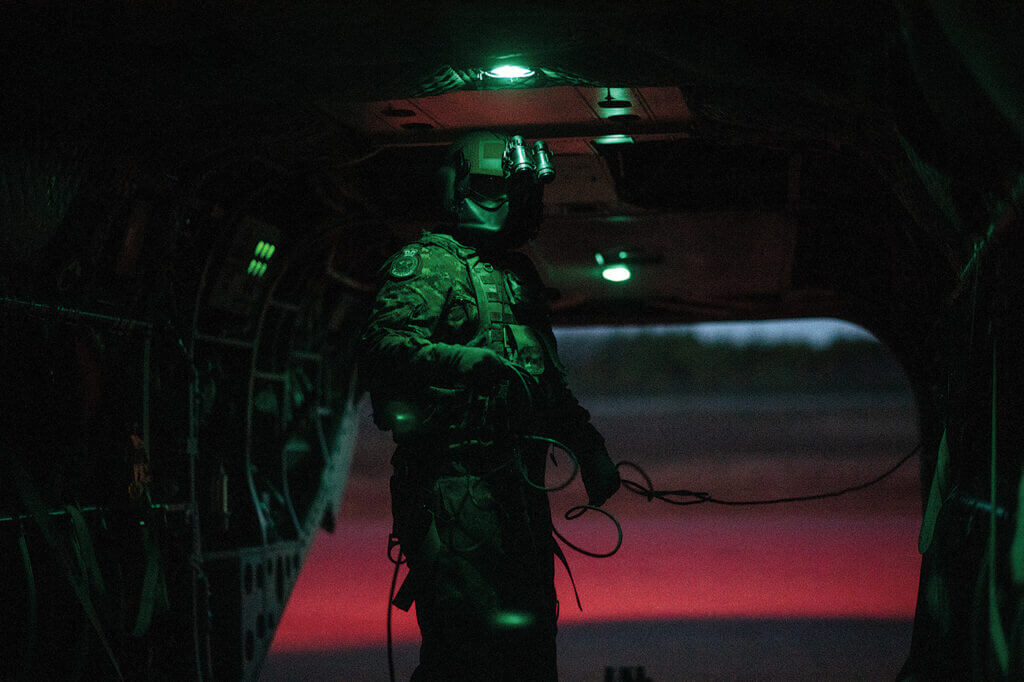
Testing concepts for operations
As with the rest of 1 Wing, 430 Squadron is understrength, so filling out the positions of an aviation battalion took some effort. Four of the squadron’s strongest flight leads were candidates on the Advanced Tactical Aviation Course the previous four months, and were given time to reset with family, though on short notice to leave “if we need to deploy,” said Brassard.
The squadron is also the first in line to operationalize the upgraded CH-146 as the helicopters complete the Griffon Limited Life Extension project at Bell Textron Canada in Mirabel, Quebec. The $900 million project will address obsolescence issues with critical components and meet North American and European civil regulatory requirements.
The project will keep the 85 helicopters flying into the mid-2030s with new cockpit displays and engines, a better integrated sensor system, communications, and cryptographic equipment, and enhanced cockpit voice and flight recorders, navigation systems, automatic flight control systems, and control display units.
Though 438 Tactical Helicopter Squadron in St. Hubert, Quebec, will receive the first six for training and test flight purposes, 430 Squadron will be the first to conduct operations with the Griffon Mk II. With fewer helicopters available at the squadron as they go through the upgrade conversion, Brassard has “reduced the crew I have in house to surge other units … and to keep my people busy” while they wait for the first deliveries.
Nonetheless, the aviation battalion included four CH-146 Griffons and five aircrews as well as two CH-147F Chinooks and just over two full aircrews from 450 Tactical Helicopter Squadron in Petawawa, Ontario, plus enough maintenance technicians to sustain operations around the clock. Brassard also had two Griffons and three crews at a nearby airfield on 20 minutes notice to move, providing forward air medical evacuation to hospitals in Wainwright or Edmonton if required during the exercise. [See story on page 100.]
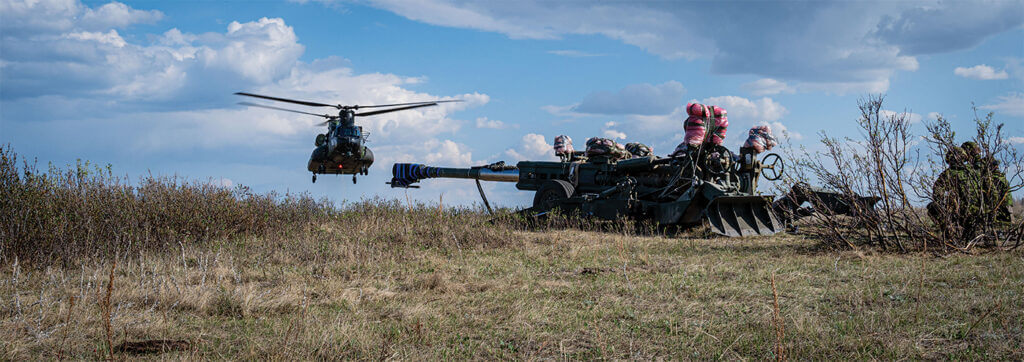
In addition to supporting both the blue and red forces, Maple Resolve served as a proving-ground for several initiatives the squadron has been advancing over the past year.
The most significant was the concept of Forward Arming and Refueling Areas. Rather than establish fixed points for refueling aircraft, which is common on exercises like Maple Resolve, the squadron has adapted the lessons of Ukraine to emphasize mobility, employing multiple points that have already been recced and massing fuel trucks and ammunition from covert positions just before a helicopter lands, and then immediately dispersing. “This is what they are doing in Eastern Europe, to not be fixed in a location,” said Brassard.
A second initiative involved the Space Operations Squadron of 7 Wing, which worked with the 430 Squadron on conducting operations in contested and degraded environments where GPS and satellite communications are limited or non-existent. In a previous exercise in 2022, the two focused on concealment, camouflaging helicopters, command posts and other equipment, minimizing personnel movement, and limiting electronic signatures when satellites were known to be overhead.
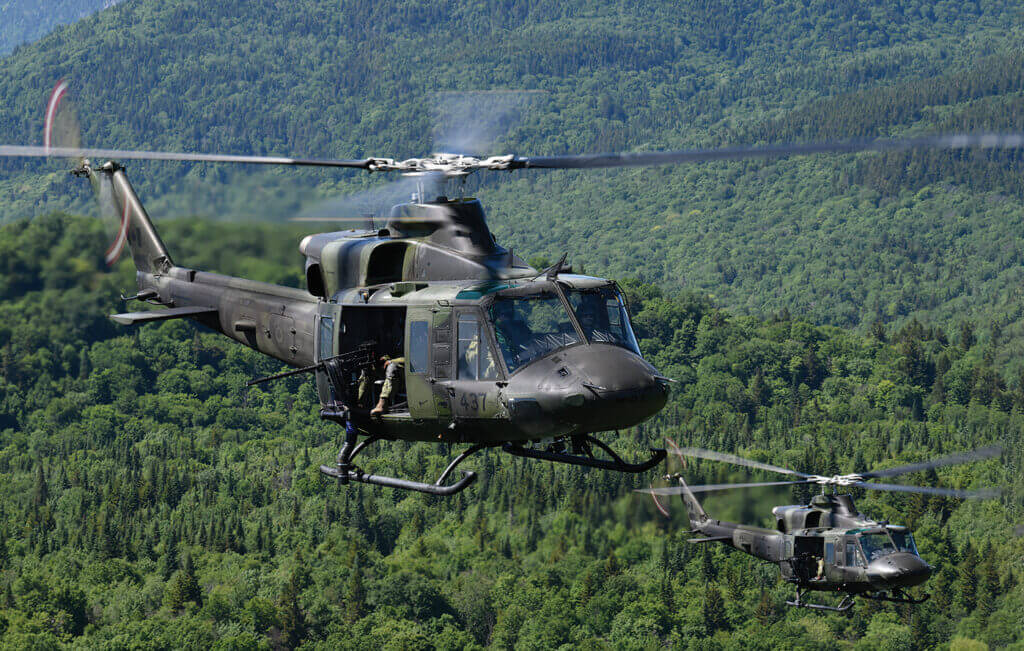
The stand-up of an aeromedical capability in the Griffon, refueling with few fixed locations, and operating with a reduced visible footprint are not necessarily indications of an upcoming deployment, Brassard stated. But the squadron is standing by for contingency operations under the Canadian Armed Forces’ managed readiness plan, and could be deployed to Latvia if an aviation battalion is required to support the Canadian Army-led multinational battle group that is in the process of scaling up to a combat capable brigade.
“We are already on high readiness, so this is just sustainment of high readiness,” he said. “Everyone here is ready to go … on short notice. So, for us, [Maple Resolve] is a really good training event where we can expand the box a bit on the standardized missions we have been doing in the past. I really like it. We are thinking outside the box.”


A test of old and outdated helicopters, tactics that suit them. The griffon is a laughing joke. Quit wasting hard earned tax payer money on them.y